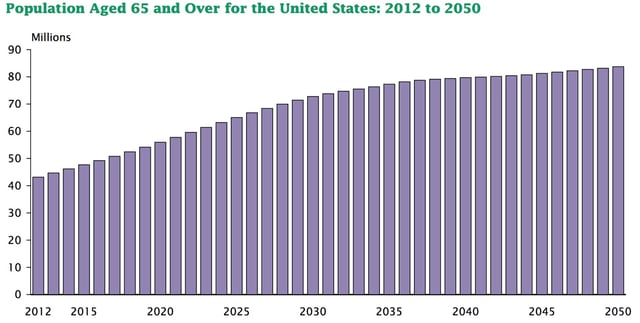 Primary care is crucial for building a strong healthcare system that ensures positive health outcomes, effectiveness, efficiency, and equity. It is the first contact in the healthcare system for individuals and aims to provide the patient with a broad spectrum of preventive and curative care over a period of time. It provides individual, family and community-oriented care for preventing, curing or relieving common illnesses, disabilities, and promoting overall health wellness.
Primary care is crucial for building a strong healthcare system that ensures positive health outcomes, effectiveness, efficiency, and equity. It is the first contact in the healthcare system for individuals and aims to provide the patient with a broad spectrum of preventive and curative care over a period of time. It provides individual, family and community-oriented care for preventing, curing or relieving common illnesses, disabilities, and promoting overall health wellness.
But, imagine if the only place you could bring your child when he develops flu-like symptoms, an ear infection, a nagging cough, a sore throat or needs a checkup or a refill for his asthma inhaler, was to a hospital emergency room. Or, imagine if you have multiple medical problems and you don’t have a regular doctor you can trust will make sure you’re getting all the right care you need to keep them under control.
In other words, imagine a world without primary care. According to a November 2013 study by the U.S. Department of Health and Human Services (HHS), the demand for PCPs will outpace the supply by approximately 20,400 physicians between 2010 and 2020.
Why is the demand for primary care physicians outpacing the supply? Several factors influencing demand for primary care physicians include income discrepancies, the unappealing nature of the profession, the aging baby boomer generation, and provisions of the Affordable Care Act.
Income Discrepancies
There is a growing need for hospital physicians. According to a workforce study by the Massachusetts Medical Society, 75 percent of community hospitals reported a shortfall of internal doctors while another 46 percent reported a shortfall of family doctors.
When there is a low supply and high demand for primary care doctors, patients have trouble accessing medical care, which leads them to use more expensive and unnecessary alternatives, such as the emergency room.
Many doctors point to the income discrepancies between primary care physicians and specialist doctors as the reason for the primary care physician shortage. A primary care family physician is paid an average of $175,000 per year, which is nearly 65 percent less than an invasive cardiologist, who earns $490,000 per year. A pediatrician makes an average of $180,000 per year, which is 40 percent less than an anesthesiologist who earns $330,000 per year.
When medical students graduate with an average of $155,000 worth of debt, the desire to enter primary care is nonexistent.
Some doctors say a drastic change is needed not only in the way primary care is provided, but in the ways doctors are compensated to address the shortfall of primary care physicians.
Primary care hasn't always been this way. In the 1990s those in the medical profession expected a managed-care healthcare model to evolve in which primary care physicians would be the "gatekeepers" for medical care. Primary care physicians would send patients to specialists for treatment that they could not handle themselves, thus, limiting the number of surgeries and tests being performed.
Instead of the managed-care model, a fee-for-service compensation model prevailed that compensates doctors based on the services provided.
The Appeal of Traditional Primary Care
Another culprit leading to the shortfall of primary care physicians could be that medical students are not excited about primary care careers. There is a stigma surrounding primary care - medical school students don't view the primary care profession as being as esteemed as other specialties and therefore choose not to pursue that field. Moreover, the rushed environment creates a negative experience for medical students who do tours of primary care practices. Primary care physicians are running as fast as they can to get through as many problems as fast as possible and trainees sense that.
The deficiency of practicing primary care doctors has also led to fewer resources being devoted to technological advances in the field, further weakening the field's appeal to medical school students.
The number of available residency positions are not keeping pace with the number of medical school graduates, thereby limiting the pool of credentialed physicians.
The declining number of primary care doctors, coupled with increased demand (which is caused by national healthcare reform increasing the number of patients seeking doctors), has created discontent within the healthcare system. There are simply not enough physicians to serve the number of patients.
The Baby Boomer Burden
In 2011, the first of the baby boomers (those born between the years 1946 and 1964) turned 65. Representing an estimated 26 percent of the U.S. population, the baby boomers have a tremendous influence on the nation's social, economic, and cultural trends.
Their demands for medical services are no different. As the baby boom generation ages, servicing their medical needs will place a tremendous burden on the nation’s health system. Projections by the Administration On Aging suggest the population of those aged 65 and over will increase 36 percent between 2010 and 2020. Alarmingly, the nation’s supply of doctors does not meet this demand now, and given current trends, the gap will widen even further.

Affordable Care Act
The Affordable Care Act was created to expand access to healthcare for all Americans while controlling escalating healthcare costs. Several provisions within the Affordable Care Act increase the demand for primary care physician services such as the requirement of Americans to purchase insurance coverage or face federal penalties. As a result, millions of previously uninsured Americans will be added to the healthcare system, which will significantly increase the need for physician services, including primary care physicians.
The expansion of health insurance coverage and the growth of the nation’s population will drive the demand for primary care to levels exceeding current capacity. Millions of people who have not had access to primary care will now be seeking it. As a result, there are likely to be disruptive changes in primary care delivery.
By now it should be clear that primary care is integral to an effective, efficient health care system.
Related article: Analysis: Direct Primary Care In the United States
An alternative to primary care has arisen and it's populatiry is growing throughout the nation. The new model, known as direct primary care, grants patients significantly more access to their primary care physician while providing the physician with less stress. Is direect primary care right for you?

